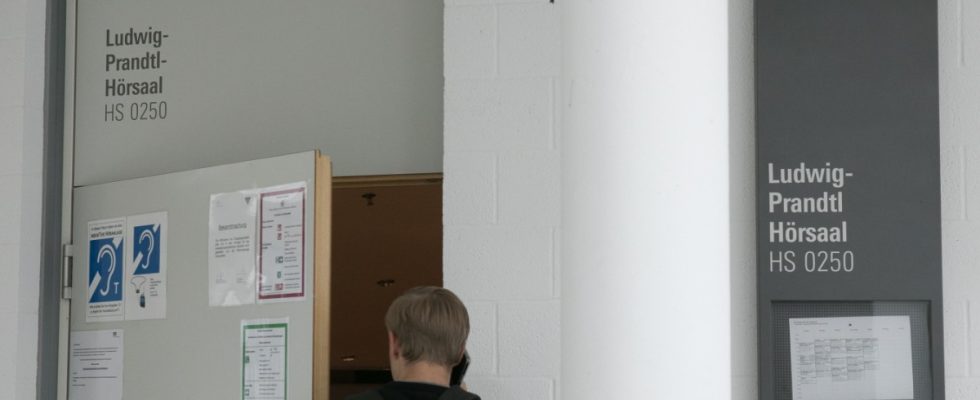Four halls and two parts of the building at the Technical University of Munich (TUM) still bear the names of people whose history is closely linked to the Nazi era. But that should now be over. As the university announced on Friday, the rooms will no longer be recognized by name. Specifically, there are four lecture halls on the Garching campus that are named after Willy Messerschmitt, Gustav Niemann, Ludwig Prandtl and Ernst Schmidt. All four willingly made their scientific work available to the Nazi regime, and some were also members of the NSDAP. After the names are removed from the lecture halls, they will not receive a new recognition by name, but will only be identified by their corresponding room number, said TUM spokesman Ulrich Meyer upon request.
The university is doing the same thing with two parts of the building on Arcisstrasse. These were designed by the architect German Bestelmeyer and named after him, who taught at the TUM – then still the Technical University of Munich – from 1922. Bestelmeyer was a convinced National Socialist and a party member as early as 1933. After the architect’s death in 1942, Adolf Hitler ordered a state funeral.
The university also wants to distance itself from a total of 24 honorary degrees that were awarded during the Nazi era and cannot be revoked after the death of the person concerned, as this is not legally possible.
About a year ago, students at the TU publicly pointed out how many places the university still paid homage to Nazi personalities. Ulrich Meyer explains that the university had been trying to clarify things long before that. “Unfortunately, this came to a somewhat standstill during the Corona period.” Finally, a commission of experts was commissioned under the leadership of Professor Winfried Nerdinger, the founding director of the NS Documentation Center in Munich. It should develop recommendations for action on how to deal responsibly with names that are historically contaminated by the Nazis.
TUM President Thomas Hofmann explained in a written statement: “Science must not decouple itself from ethical norms and break away from its anchoring in the rule of law. But that is exactly what was the case during the National Socialist era and is in contradiction to the TUM’s values today .” At the university we are committed to democracy and human rights. We want to send a clear signal about this.
Based on the recommendations of the expert commission, “places of reflection” are to be created both in Garching and on Arcisstrasse. The historical roles of the previous namesakes will be explained there. In Garching, they also want to take a closer look at three plaques at the subway station that commemorate the Nazi-affected personalities Willy Messerschmitt, Claude Dornier and Ludwig Prandtl. It is unclear whether these will also be accepted; the Munich Transport Company (MVG) would be responsible for this. However, the university will seek discussions with those responsible there to discuss how to further deal with the food banks.
The educational work at the TU is not yet completely complete. “Unfortunately, due to a lack of sources and research, the expert commission was not able to come to a meaningful conclusion about everyone’s behavior and activities during the Nazi era,” explains Ulrich Meyer. That’s why the university wants to commission further research and then draw further conclusions from the results.
The “places of reflection” are also intended to address the actions of the TH Munich during the Nazi era. The aim is to show that the TU is also coming to terms with its own past, said Meyer. “History doesn’t disappear.” But what will now disappear are the names in the lecture halls. When exactly is still unclear. However, according to Ulrich Meyer, we will try to “implement all measures promptly.”

